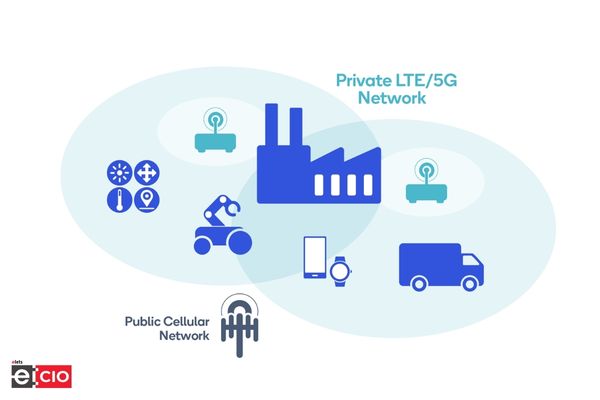
The fourth industrial revolution is rapidly transforming the world, bringing new technologies and capabilities set to change how we live, work and interact. As India prepares for this technological revolution, the country’s leaders are exploring ways to ensure that its citizens can benefit from the opportunities it brings. One such strategy is the deployment of private 5G and LTE networks.
According to industry estimates, India alone will have more than 900 million internet users by 2025. As a result, a strong digital infrastructure must support digital inclusion.

Private 5G and LTE networks are dedicated networks built and operated by a single entity, typically a business or government. They are designed to provide a secure and dedicated communication infrastructure to support specific use cases and applications. By leveraging these networks, India can ensure that its critical infrastructure and services are connected and secure, providing a foundation for the deployment of new technologies such as IoT, artificial intelligence, and autonomous systems.

One of the key benefits of private 5G and LTE networks is that they provide a secure communication infrastructure to protect against cyber threats. With India facing increasing cyber-attacks, the deployment of private networks can help safeguard sensitive information and reduce the risk of data breaches.

Another advantage of private networks is that they offer faster and more reliable connections compared to public networks. This makes them ideal for applications that require low latency and high bandwidth, such as remote surgery, autonomous vehicles, and industrial automation. By leveraging these networks, India can create new opportunities for businesses and entrepreneurs, and drive economic growth.
Also read: Reliance Jio launches 5G services in 10 more cities
Challenges Indian industries are facing concerning their own private 5G and LTE network
Indian industries face several challenges in implementing their own private 5G and LTE networks:
One of the major challenges is the high cost of deployment and maintenance of these networks, which can be prohibitive for smaller industries. Another challenge is the lack of adequate spectrum allocation for private networks, which limits their capacity and coverage. Additionally, there is a shortage of skilled personnel in the country to manage and operate these networks, which increases the cost and complexity of deployment. Furthermore, there are concerns about the security of these networks, as they can be vulnerable to cyber-attacks if proper security measures are not implemented. Lastly, there is limited government and regulatory bodies’ support, making it difficult for industries to navigate the complex legal and technical requirements of deploying their private networks.
Private 5G and LTE networks can also help India address some of its most pressing challenges. For example, deploying these networks in rural areas can help bridge the digital divide, providing access to essential services such as healthcare, education, and financial services to millions of people. Additionally, these networks can help improve public safety and security, allowing the government to respond quickly to emergencies and crises.
In conclusion, private 5G and LTE networks can play a critical role in helping India prepare for the fourth industrial revolution. By providing a secure and dedicated communication infrastructure, these networks can support the deployment of new technologies, drive economic growth, and address some of India’s most pressing challenges. As India continues to embrace the digital age, it will be necessary for its leaders to consider the role that private networks can play in ensuring that its citizens can benefit from the opportunities that the fourth industrial revolution brings.
Be a part of Elets Collaborative Initiatives. Join Us for Upcoming Events and explore business opportunities. Like us on Facebook , connect with us on LinkedIn and follow us on Twitter.
"Exciting news! Elets technomedia is now on WhatsApp Channels Subscribe today by clicking the link and stay updated with the latest insights!" Click here!











